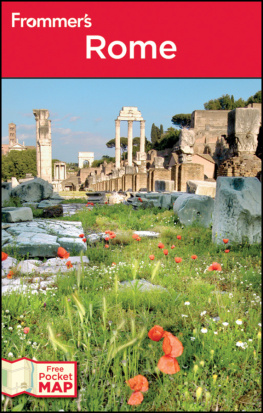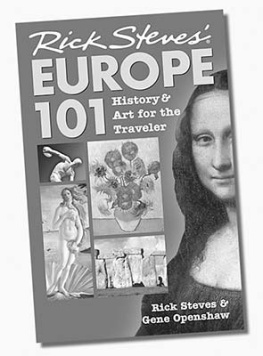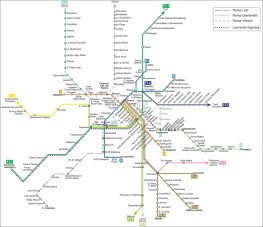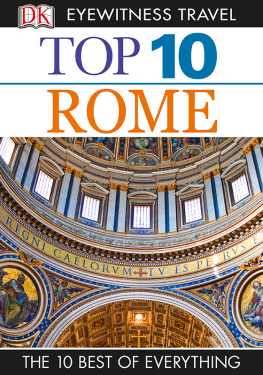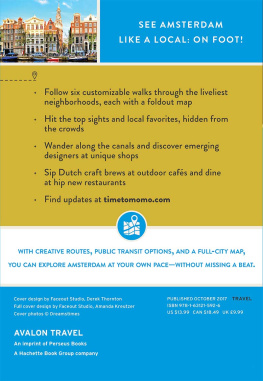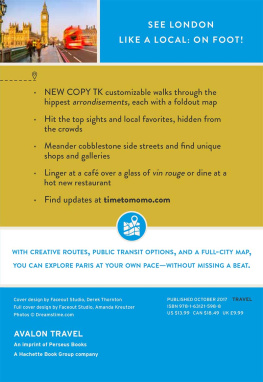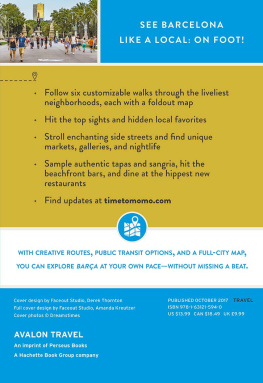ON FOOT GUIDES
ROME WALKS
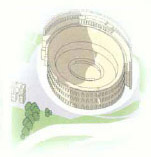
Copyright 2011 Duncan Petersen Publishing Ltd
Conceived, designed and produced by
Duncan Petersen Publishing Limited
C7, Old Imperial Laundry
Warriner Gardens, London SW11 4XW
United Kingdom
Published in the USA by
Globe Pequot Press
Guilford, Connecticut
UK ISBN-13: 978-1-903301-58-6
US ISBN: 978-0-7627-6110-4
A CIP catalogue record for this book is available from the British Library.
Library of Congress Cataloging-in-Publication Data is available.
The right of John Fort and Rachel Piercey to be identified as the authors of this work has been asserted by them in accordance with the Copyright, Designs and Patents Act 1988.
All rights reserved. No reproduction, copy or transmission of this publication may be made without written permission. No paragraph of this publication may be reproduced, copied or transmitted save with written permission or in accordance with the provisions of the Copyright Act 1956 (as amended). Any person who does any unauthorized act in relation to this publication may be liable to criminal prosecution and civil claims for damages. Requests for permission should be addressed to the Publisher.
Conceived, designed and produced by
Duncan Petersen Publishing Ltd
Editorial Director Andrew Duncan
Editors Jo Beckett-King, Tara OSullivan
Maps Global Mapping Ltd, Mapping Company Ltd, Oxford Designers and Illustrators
Photographs John Fort, Rachel Piercey
Printed by Edelvives Talleres Graficos, Spain
Visit Duncan Petersens travel website at
www.charmingsmallhotels.co.uk
E xploring Rome on foot

R ome is unique among the art cities of Italy due to its size and fascinating history, which spans more than 2,700 years. It is much larger and older than Venice or Florence: they both date from the Middle Ages, while Rome dates back to its founding in 753 BC. This is the date given by Roman historians and served as the starting point for Roman dating (AUC, Ab Urbe Condita, From the Founding of the City), and modern archaeology confirms that the origins of the city go back to about then. As the centre of the largest empire in the world for some of those centuries and of Christianity from its infancy, the city was either rich, or extremely rich for much of that time. It attracted many of the greatest and most inventive artists and architects, with the result that there is a range of monuments and buildings, sculptures and paintings, fountains and squares of a quantity, quality, beauty and variety not to be found anywhere else in the world. There are fine temples from 100 BC and striking modern buildings from the 21st century (although not many, admittedly), and in between an enormous variety of extraordinary creations, with something from every single century. However, all this poses difficulties to the visitor, because distances across the historic centre are considerable, and unless the stay is quite long, it is necessary to make the difficult decision of what to see and what not. The walks in this book are designed to help with just that.
HOW THE MAPPING WAS MADE

A small team of specialist cartographers created the maps digitally in Adobe Illustrator. The footprint of the buildings is drawn first, then the width of the streets is artificially increased in order to give extra space for the buildings to be drawn in three dimensions. Next, the buildings are added, using aerial photography as reference. Finally the details of the buildings and the colour is added - the first very time consuming, the second less so because digital drawing programmes allow it to be automated.

It is very much a city for walking, but you should careful to eke out your stamina and physical resources as you move around. In addition to the distances to be covered, it is important to remember the famous seven hills on which Rome is built actually eight if we include the Janiculum (The Other Romans, page 120), not counted among the original seven because it is on the west side of the Tiber. Although the hills are not high, they are at many points quite steep, and you will find yourself at times confronted with long uphill stretches and often by rather daunting flights of steps or ramps. Also, very little of the centre of the city has been made permanently pedestrian, which means that while admiring some exquisite architectural detail you must always keep a watchful eye on the somewhat relentless traffic. However, such is the concentration throughout the city of beautiful squares, fountains, monuments, churches and works of art, there is always plenty to inspire. The metro system is limited, but can be of use getting to and from starting points. The bus system is comprehensive and worth getting to grips with.
The twelve walks have been carefully chosen to give as wide a selection as possible in terms of chronology and variety of form, and include many of the best-known sights an1 monuments as well as a wealth of less famous, but no less interesting, ones. The titles are thematic (e.g. Baroque Splendour), but one of the fascinations of the city is the constant juxtaposition of monuments from centuries far apart, or of buildings created out of Roman remains or indeed just piled on top of them which means that the walk may well go off on tangents from the basic theme. The itineraries are designed to be covered in about two hours, but this is on the assumption that you do not allow yourself to deviate or be distracted. This may well be too much to expect, and the likelihood is that you will find yourself enticed away from following the route strictly by some vista or intriguing courtyard, or a particularly well-placed bar the coffee in Rome is universally excellent. In which case, the walk may well last much longer.
Of paramount importance as you move around the city is to look upwards, constantly. This is not just to admire the rooftop terraces from which vegetation spills evocatively no flat space is wasted in the city but to admire the fine architectural features of so many of the buildings: the giant wooden doors; the intricately carved stone window frames and cornices; the beautiful colours of the faades; the little shrines perching on the comers of so many blocks. Also look ahead at the endless changing vistas, many accidental but many intentional. There is a strong theatrical element to the city, particularly in those parts dating from the 17th and 18th centuries, when architects deliberately exploited the differences of level in the city to create panoramas and surprises round corners.
It will be noticed that there is one major omission in the book, the Vatican Museums, Sistine Chapel and St Peters. This was not an easy decision to make, as clearly the Vatican is one of the key attractions of Rome, but it was felt such a concentration of things to see in a small area could hardly be treated as a walk in the style of the other ones, and if done properly would have resulted in something very unwieldy and out of proportion for a book of this size.



